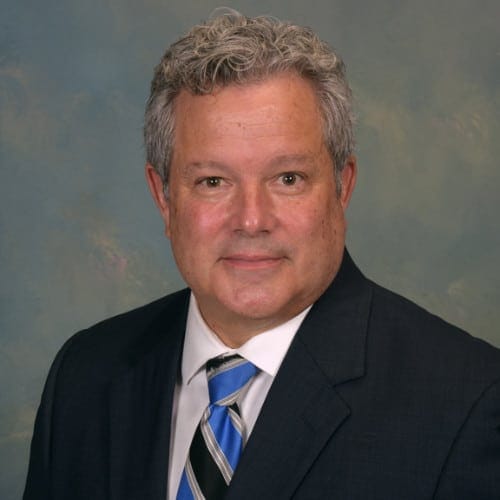
By Michael “Mike” J. Jones
Priorities may be shifting from the status quo for health care executives:
According to a recent article written by Rachel Popa for Becker’s ASCReview, healthcare executives are increasingly focusing on revenue growth in outpatient services, according to Advisory Board’s 2019 Health Care CEO survey.
Advisory Board, a research and consulting company, surveyed 90 C-suite leaders between January and March. Fifty-seven percent of respondents said their highest priority was increasing ambulatory access. Increasing ambulatory access includes changing hours of operation, the number of staff available and the movement of patients through a facility.
The other four top priorities for healthcare executives include:
1. Minimizing unwarranted clinical variation
2. Strengthening primary care alignment
3. Redesigning health system services for population health
4. Innovative approaches to expense reduction
Status quo-the current state of being:
For healthcare professionals, particularly physicians, what is the status quo? It’s already high and ever-increasing costs of healthcare, with inconsistent clinical outcomes and low patient satisfaction. Burnout among physicians is very high because they find multiple stumbling blocks in their medical practice. Professionals frequently refer to the current state of healthcare organizations as a “sick care system” with hospital services as a primary focus and designed to take care of patients when illnesses and injuries occur.
The status quo serves no one well––on either side of the patient/physician relationship. But, if you flip around the status quo, healthcare becomes more satisfying for everyone. Instead of high costs you would have:
- Lowered costs through efficiently providing consistently high-quality services.
- Reduced occurrences of duplicated services.
- Exceeded patients’ expectations.
- Motivated physicians through empowerment.
Until there is a catalyst for change, the status quo remains uninterrupted. It appears that healthcare executives are recognizing the need for change. What we need is a “healthcare system” that is patient centered and is designed to improve the health status of communities served in a convenient and cost effective manner.
Physicians Provide the Catalyst for Change:
Physician Engagement-the catalyst for change:
Physician engagement doesn’t differ all that much from engagement in other professions. Physicians maintain a level of professional satisfaction through engagement with the healthcare organization, and engagement exists at multiple levels:
- Active and formal engagement in positions of governance, leadership and management positions (“being invited to the table”).
- Those who are “at the table” must transfer knowledge and the organization and organizational performance with full information transparency (data analysis).
- Process improvement efforts must always include physician input and physician support.
- Maintain open lines of two-way communication; be available to listen and support physicians. Listening to the root cause often illuminates the solution to dissatisfaction.
Physician Alignment-the end result:
Physician alignment is the end result of engaging physicians. Through alignment, physicians are committed to the same mission, vision and values of the organization – and the tri-fold goals of lower costs, best clinical outcomes and high patient satisfaction. Ultimately, physician alignment IS the catalyst for breaking the status quo.
The most successful healthcare organizations are physician-lead: The Mayo Clinic, Cleveland Clinic, Kaiser Permanente. Physician system leaders engage lower-tier executives to make things happen. Vice versa, organizations led by business executives must bring in physicians to implement these types of changes. The challenge to achieving physician alignment is that healthcare systems–particularly those lead by business executives–are notoriously slow to adopt the necessary system-wide changes.
For example, one of the greatest concerns for physicians is the increasing cost of medical care. They are aware of the burden their patients bear and the costs incurred by the health system. Additionally, the revenue cycle processes are often inefficient from co-pay collections, insurance filing, and collections. Engage physicians and physician office staff in improving revenue cycle management; their perspective as treatment providers may shine a light on opportunities that non-physician leaders may not see.
Physicians are motivated (i.e., aligned) when given the ability to provide the best possible care for their patients through a level of autonomy and control of their practice. They want to be key decision-makers. Contrary to what you might think, compensation is not a leading motivator for most physicians.
In a recent LinkedIn discussion thread, Renee Oinonen, RN, a senior consultant at Practicing Excellence polled her connections: “What does physician engagement look like in the day to day? I hear a lot about it the importance of physician engagement but, I’m curious if you were to describe what that looks like outside of a survey response, what would you see?” The responses were illuminating.
“At the front lines of clinical care it looks like physicians actively involved with their support staff solving problems at the local level with a process in place to escalate those that need additional help. In leadership it looks like shared mission, vision and values with a pact that codifies the reciprocal responsibility of leadership and physicians to honor those values…” (Paul DeChant, MD, MBA, FAAFP)
“Physician engagement looks like fun. When docs start brainstorming a way to create value. When they can’t wait to get the reports on how their population of patients is doing. When they see other practices that have solved common problems and they seek them out and listen to the solutions and think out loud about how they might apply those changes in their ow practices. When they believe that you really care about their patients and about them as human beings.” (Robert Groves, MD)
Dr. Rajil Karnani, MD, MSPA, notes: “When I think of physician engagement, I think of the whole-person paradigm with regard to work relationships, regardless of the occupation. When people are engaged, their needs are being met, and as a result, they choose to give the most of themselves to the mission and goals of the organization…. When needs are not met, you will see many of the symptoms we see with physicians today regarding burnout (i.e., cynicism, lack of compassion, fatigue.)
But, perhaps Edward Chao, DO, said it best in the thread: “I read this from a physician: ‘When we are not invited to sit at the table, we feel like we are on the menu.’”
Let’s take physicians “off the menu” and place them at the forefront of menu development.
Michael Jones is the principal and advisor for InnovateHC LLC, a healthcare management consulting corporation, specializing in interim leadership and management advisory services. He shares his expertise on healthcare leadership and innovation at innovatehc.net.
The Editorial Team at Healthcare Business Today is made up of skilled healthcare writers and experts, led by our managing editor, Daniel Casciato, who has over 25 years of experience in healthcare writing. Since 1998, we have produced compelling and informative content for numerous publications, establishing ourselves as a trusted resource for health and wellness information. We offer readers access to fresh health, medicine, science, and technology developments and the latest in patient news, emphasizing how these developments affect our lives.








